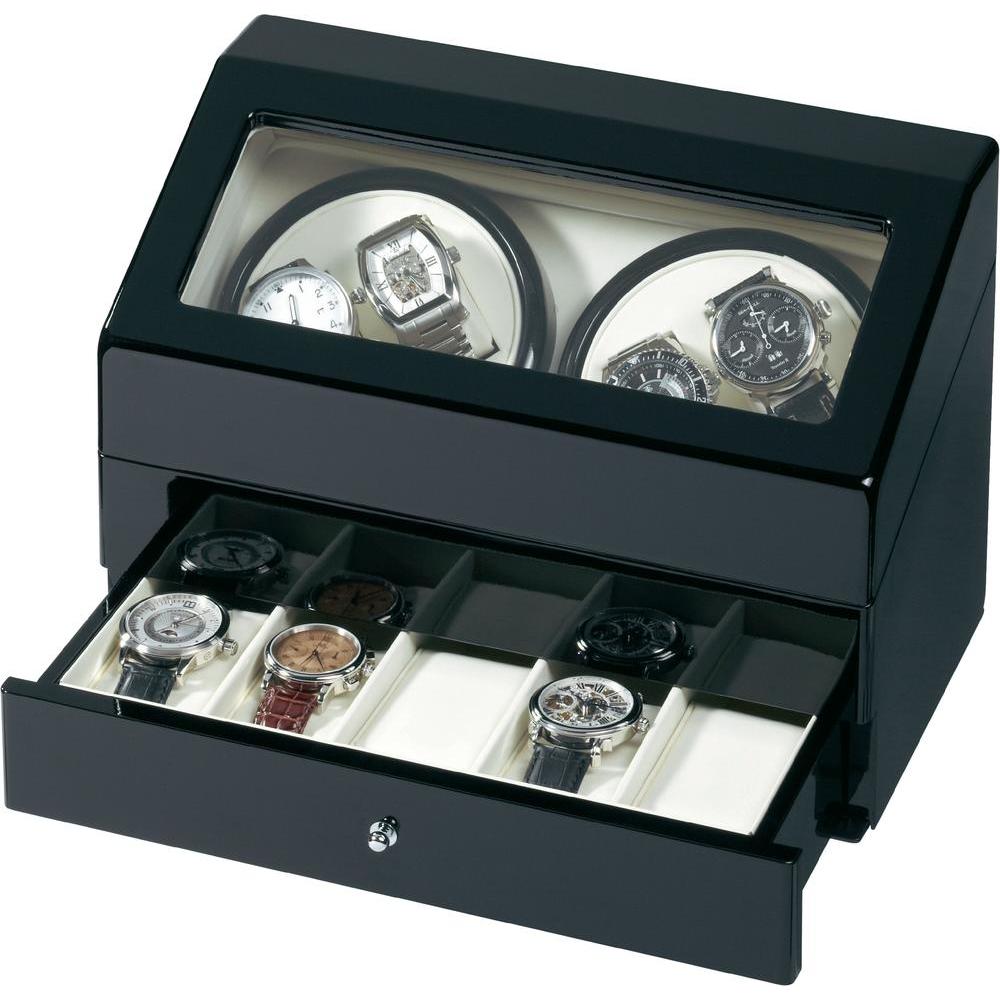

This way your watch is safe and sound – no matter the brand. Thus, it’s highly advisable to get a model that operates in this range. However, 99% of automatic timepieces need anywhere between 500-1200 turns per day. Some watches might have specific requirements in this field. In other words, Turns Per Day are the number of rotations the winder makes during 24 hours. The specific requirements for both can be found in user manuals. The winder is pretty much useless if it can’t wind your watch properly (or damage it in the long run).Īnd that leads us to the two most important metrics in a watch winder – TPD (Turns Per Day) and winding directions. However, the brief summary of the said article below is absolutely enough to help you understand the matter and pick the right model for your collection.įirstly, it’s worth mentioning that no matter how much you fancy a watch winder’s design, it shouldn’t be the decisive factor when it comes to the purchase.

#Automatic watch winder for sale free#
If you want as detailed information on the subject as possible, feel free to have a look. Last year I wrote a newbie-friendly watch winder tutorial. If you’re mulling over the purchase of your first watch winder, learning about a few basic aspects of these products is highly recommended. By reviewing three products from three popular manufacturers, I hope to help you pick the best quad watch winder for your watches.īut first, let’s learn some basic about how watch winders work. If you own a larger collection consisting of four or more automatic models, getting a multiple watch winder is an idea worth considering. Additionally, it just looks good and classy. Not only can a reliable watch winder solve the problem but also spare you the dull task of having to wind your timepiece anytime you decide to wear it.
#Automatic watch winder for sale full#
And the quicker you spot any abnormalities, the better chance of a full repair. Unless you decide to wear a few watches at once (trust me, some people do it), it’s impossible to track whether all perform as well as they should. However, it becomes just a tad more difficult and expensive when you own a larger collection of automatic models. Without a doubt, a once-a-year visit to your trusted watchmaker to check whether everything works well is a great idea and an obvious way to make sure you squeeze as many years as possible out of your watch. The first sign that there’s something wrong with your automatic watch is degraded accuracy that can be a signal of a myriad of issues.

This is especially true when talking about mechanical timepieces. It’s a well-known fact that providing your watches with the proper care plays a massive part in their longevity.


 0 kommentar(er)
0 kommentar(er)
